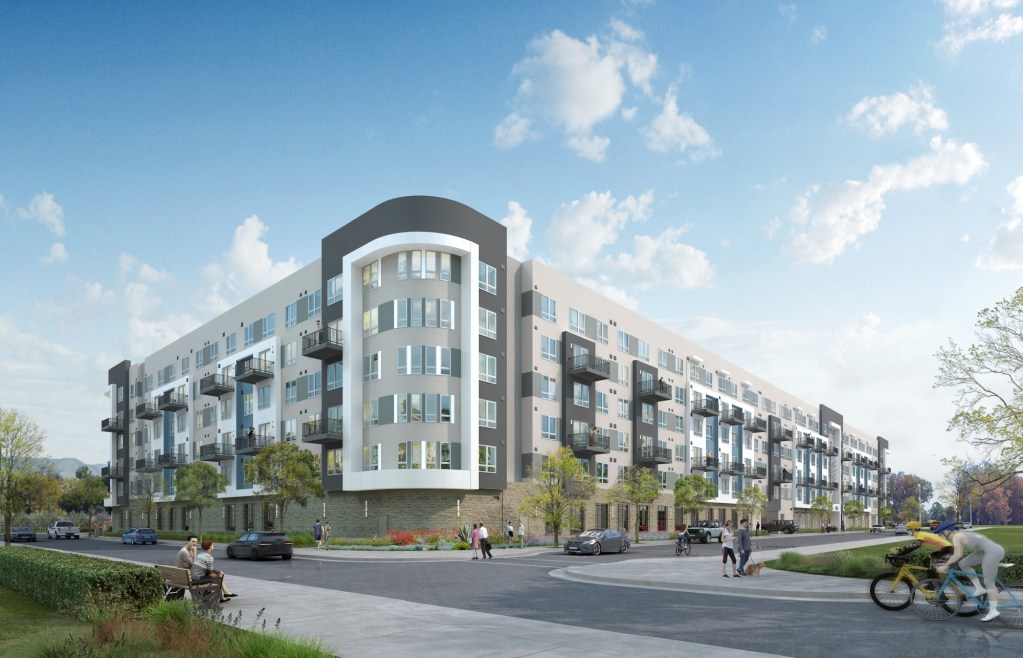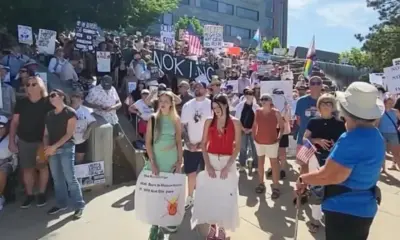Business
New Housing Development Launches Near Berryessa BART Station

A significant mixed-income housing development has officially commenced near the Berryessa BART Station in San Jose, with plans for 708 new homes. Marking its launch with a ceremonial cannon fire, the project aims to address the growing need for affordable housing in the region and promote accessibility to public transit.
The first phase of the Berryessa BART urban village was inaugurated on October 23, 2023, involving a 13-acre site located at 1655 Berryessa Road. This newly developed neighborhood will combine affordable housing, townhomes, and single-family residences, all within walking distance of the transit hub. San Jose Mayor Matt Mahan emphasized the project’s importance, stating, “Here you’ve got unparalleled access to transit, and so that’s really what this project means… for families, places for kids to grow up, to have birthdays, to do their homework and to build a future in our valley.”
The Facchino family, who have been prominent in the area since establishing a trucking company in 1931, have played a crucial role in this development. After acquiring the property in 1972, they transitioned their business and began leasing parts of the land to support the construction of the nearby BART station. This new project represents a transformation of the site into a vibrant residential community.
Originally, the San Jose City Council approved plans that included up to 850 residential units alongside a commercial building. However, due to challenges in the office market, the project evolved. The current development includes 260 affordable apartments managed by Swenson, as well as 48 townhomes and single-family homes developed by KB Homes.
The affordable units will cater to various income levels. Of the 260 apartments, 26 will be designated for very-low income households earning between 30-50% of the area median income (AMI), while 130 units will be reserved for those earning between 50-80% AMI. Moderate-income households will have access to 101 units, and three additional apartments will serve as manager’s units. The AMI for a family of four in Santa Clara County is currently $195,200.
Future plans for the development include an additional 338 market-rate apartments and 62 for-sale units. Urban planning consultant Erik Schoennaur noted the project’s intent to support transit ridership and contribute to local economic growth, stating, “We worked with the city departments to develop the Berryessa BART urban village, which envisions the high-density urban neighborhood… to support retail sales on Berryessa and future job growth.”
While downtown San Jose has garnered considerable attention, North San Jose has seen significant investments in recent years, including several data center projects. The area demonstrates strong potential for housing development, with multiple projects either in planning or underway. One such initiative aims to bring nearly 1,500 homes to the former Saukauye Family farm site near the intersection of Seely Avenue and Montague Expressway.
City officials view the Facchino family’s project as a critical component of a broader strategy to revitalize the Berryessa area. Future developments near the Berryessa station could accommodate over 4,800 new homes and create additional employment opportunities across approximately 270 acres. District 4 Councilmember David Cohen highlighted the need for diverse housing options, stating, “We need some affordable housing projects. We need some middle-income housing. We need a variety of things on this site.”
Despite the positive developments, San Jose faces ongoing challenges in meeting housing demands. The city is required to plan for 62,200 new homes by 2031, but production has lagged behind targets due to a difficult business climate. Recent data indicates that construction costs in the Bay Area are among the highest in the nation, with only New York reporting higher expenses.
A report by HomeAbroad revealed that San Jose experienced a dramatic decline in permit activity, with a drop of 68% from 2020 to 2025. Last year, the city saw no market-rate multifamily developments with more than 20 units begin construction. In response, San Jose has introduced a new incentive program aimed at reducing fees and taxes to stimulate housing projects that have remained dormant for years.
Schoennaur emphasized the importance of making housing production more efficient and cost-effective, advocating for streamlined city processes. He also noted the critical role of public subsidies for affordable housing, which this project will utilize through federal tax credits. “We need city leadership to be successful in all this,” he stated.
As the Berryessa BART urban village takes shape, its potential to transform the area and address housing shortages remains a focal point for city leaders and residents alike.
-

 Business4 days ago
Business4 days agoUK to Finalize Stablecoin Regulations by 2026, Boosting Crypto Sector
-

 Business5 days ago
Business5 days agoU.S. and U.K. Target Cybercriminal Networks, Seize $15 Billion
-

 World4 days ago
World4 days agoMilitary Artillery Plan Sparks Safety Concerns Along California Highway
-

 Lifestyle5 days ago
Lifestyle5 days agoKISS OF LIFE’s Natty Dazzles in Micro-Shorts at Seoul Event
-

 World5 days ago
World5 days agoTrump Signals Reluctance to Sell Tomahawk Missiles to Ukraine
-

 Business5 days ago
Business5 days agoCalifornia to Eliminate All Plastic Bags from Stores by 2026
-

 Entertainment5 days ago
Entertainment5 days agoUtah Communities Rally as Government Shutdown Strains Resources
-

 Sports5 days ago
Sports5 days agoDomenico Doran’s Stellar Performance Leads Bishop Amat to Victory
-

 Entertainment5 days ago
Entertainment5 days agoLouisiana Senate Raises Concerns Over Medicaid Cuts Amid New Bill
-

 Sports5 days ago
Sports5 days agoTrade Low, Trade High: Key NHL Players to Consider Now
-

 Science2 days ago
Science2 days agoAncient Dinosaur Discovery in Argentina Reveals Evolutionary Insights
-

 Health2 days ago
Health2 days agoUncovering the Hidden Link Between Knee Pain and Hip Issues









